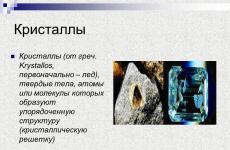Notes on the development of speech sound. Summary of a lesson on speech development and preparation for learning to read and write “Sounds.” Game "Attentive Ears"
Municipal state educational institution
Krasnologskaya secondary school
structural unit "Kindergarten"
Summary of organized educational activities on speech development with children of the senior group
Topic: “Sound and letter P”
Prepared by the teacher:
Muravleva I.A.
Krasny Log village 2016
1. Consolidation of pronunciation skills and characteristics of the sound “R”.
2. Development of phonemic hearing.
3. Determining the place of the sound “P” in words (beginning, end).
4. Sound analysis, drawing up a sentence diagram.
5. Dividing words into syllables.
6. Making proposals based on subject pictures.
7. Improving reading skills;
Tasks
Automation of the sound R in speech.
Development of auditory memory and auditory attention.
Development of the intonation side of speech and speech breathing.
Development of imagination and design skills.
Strengthening the skills of phonemic word analysis.
Strengthening orientation skills in two-dimensional space.
Consolidation of categories of case endings.
Development of skills in reproducing a sequence of different movements with speech accompaniment.
Equipment.
Large pictures depicting animals from hot countries (giraffe, zebra, camel, rhinoceros).
Small pictures of animals (chipmunk, mole, beaver, lynx, crocodile, kangaroo, tiger).
Balloons taped to cocktail straws.
Magnetic board.
Three word schemes (the sound is at the beginning, in the middle and at the end of the word).
Physical education equipment (soft module, stands, hoops).
Progress of the lesson.
Educator: Hello, guys! Today our old friend came to our lesson and guessed correctly the hedgehog. The hedgehog told me in my ear in confidence that he had never been to the zoo.
Today I suggest you go for a walk to the zoo! And let’s all show our hedgehog what a zoo it is, don’t you agree? And we will be accompanied on our walk by one sound, which is already a friend to all of you. Listen to the tongue twister and say which sound occurs most often in it.
The marmot sleeps in a spacious hole,
The groundhog has a hole on the hill.
Educator - And now I propose to do finger gymnastics together about “Fingers are a friendly family”
Fingers are a friendly family,
We can't live without each other.
This is the big one, and this is the medium one,
Our ring and last little finger is our little one.
Forgot your index finger
So that the fingers live together
We will connect them and perform the movements.
The Hedgehog teacher invites us to do articulation gymnastics with him, so that our tongue obeys us:
Articulation gymnastics, patter
A couple of birds fluttered, fluttered, and fluttered out
.
Lexical game “Name the word”
Intonation emphasis of the sound R in words. The teacher gives a sample of the pronunciation of words: rrak, morozhenoe, samovarr, etc. (picture “Objects with the sound R”) Children name the words, highlighting the sound: rrama, motorr, gorra, marrka, krrysha, etc. For each word named, the child is rewarded with chips.
Articulation of the sound "R"
When pronouncing the sound R, the tongue is behind the upper teeth. It's wide. Holding your tongue wide behind your upper teeth, you need to blow on its tip. Smile!
Articulatory-acoustic image of sound.
RRRR.
Educator - Guys, what is that growling?
Children: - It’s the car engine growling.
Educator - Yes, it’s the car engine growling.
- Come on, you and I will start the car engine.
Children: - RRRRR.
- jaws and teeth are open;
- the tongue behind the upper teeth is trembling.
- air escapes in small portions.
Educator - Let's give a description of the sound “R”.
- What sound is “R”?
Children: - consonant, hard, voiced, indicated in blue.
Educator - A, what letter represents the sound “R.” (found among the letters).
Syllable tracks:
Phonemic hearing:
(clap your hands when you hear the sound "R")
a) at the level of a number of sounds:
R N G R Z R V R D R F M R
b) at the level of a number of syllables:
RA - LO - RU - WE - OR - VA - RY - KO - AR
c) at the word level:
loaf, lynx, pear, hammer, bow, pyramid, glass.
Children: Sound R.
Educator: Yes, this is the sound R.
Now let's do a little warm-up, show the hedgehog what we can do
Let's stand in a semicircle.
(The teacher addresses each child in turn)
Say joyfully RA-RA-RA
sad RU-RU-RU
surprised RE-RE-RE
menacingly RY-RY-RY
sly RO-RO-RO
Now say the syllable DRA (DRO, DRU, DRY, DRE) as many times as I clap.
Great! They did a great job! Look, our guest really likes it. Let's continue!
Sit down on the carpet, and I will tell you riddles.
Well, the cat
That's how the cat is!
Even fear takes a little bit. And this pussy
There is a tassel on the ears. (Lynx)
He has teeth, but is very kind,
Builds a hut for children. (Beaver)
He is blind but without a guide
Always reaches the goal.
He is without a shovel and dustpan
Knows how to dig tunnels.
I dug up both the forest and the garden
Under the apple tree, under the cherry tree.
Or maybe he's looking for treasure
Any old one? (Mole)
It has a striped back
The tail is as light as feathers.
All the supplies are like in a chest,
Hides in hollows (Chipmunk)
(After the children’s answers, the speech therapist takes out pictures with animals. The pictures are attached to a magnetic board).
.
Educator: You did an excellent job with this task.
(Children sit on chairs).
Now let's look at the board. You see word patterns there. The diagrams indicate where the sound R is located at the beginning, middle or end of the word. We have pictures of animals. Now you will take turns going to the table, take a picture with an image of an animal, say the name of the animal loudly and think about where the sound R is in this word (at the beginning, middle or end of the word) and attach your picture next to the corresponding diagram.
(Children complete the task).
Educator: Great. Now let's make a short story about our animals. Choose a picture with an animal.
We went to the zoo
Did you see anyone there? zebra (tiger, camel)
we are very pleased with whom? .zebra (tiger, camel)
approached whom? to zebra (tiger, camel)
let's talk about whom? .. about a zebra (about a tiger, about a camel).
Educator: Well done, guys! Great job today!
Educator: Guys, stand so that no one disturbs anyone and repeat after me:
One, two, let's stand together Walking in place
We will put our hands straight Hands in front of us
Three, four - let's spread our arms - to the sides
We will begin to study, bend over,
touch your left leg with your right hand, touch your right leg with your left hand
We sat down on our toes Sit on our toes
Looked right, left Turn your head right, left
And, like birds, they flew! Run to the sides
Educator: How great you are doing! Guys, do you know what the letter R looks like? Please draw it in the air.
Children draw.
This is how fun and unnoticed our lesson was! You did a great job today! Do you think the hedgehog liked our trip to the zoo? Let's wish him good luck and a good mood! Bye bye!!!
15
Attached files
Name: Notes on the development of speech in the second junior group on the topic “Sound culture of speech: the sound U”
Nomination: Kindergarten, Lesson notes, GCD, speech development, Second junior group
Position: teacher
Place of work: MKOU "Ivaninskaya Secondary School"
Location: Kurchatovsky district, Kursk region
Summary of educational activities for speech development in the 2nd junior group
Topic: Sound culture of speech: sound U.
Goals: teach children to pronounce sounds clearly U both in isolation and in words in one breath; encourage to pronounce (by imitation) the sound U with different voice strengths; develop auditory perception; introduce children to a new poem; encourage memorization of the poem; make you want to imitate the voices of animals in a song.
Materials and equipment: smiley ball Timoshka; toys: a pipe, water toys, a duck with ducklings, a wolf cub and a little hare; pictures depicting large and small steamships and a wolf cub; video recordings “Dance of the little ducklings”, “Song about pets”.
GCD move
Educator. -Children, today we will play a new fairy tale. But, before we get to know her, let’s stand in a circle, Timoshka the ball wants to say hello to you. ( Pass the ball around)
Hello, little eyes! Are you awake? ( Yes!)
Hello, ears! Are you awake? ( Yes)
Hello, pens! Are you awake? ( Yes)
Hello legs! Are you awake? ( Yes)
Hello guys! Are you awake?( Yes)
Also an interesting article on the speech development of children 3-4 years old:
Educator.-Since you are all awake, let's begin our fairy tale. So, once upon a time there lived a cheerful little tongue. He lived in his little house and loved to walk, play and sing a variety of songs... Children, do you have a tongue living in your mouth, what do you think? Show it please! Well done, now hide it. One day the tongue got tired of sitting at home and went to the river. At this time, two steamships were sailing along the river ( The teacher displays pictures of two ships on the board - a big blue one and a small red one.) -What color is the big steamer? What about the little one?
The steamboat is blowing its whistle,
What sound does it make?
I'll help you guess
He will hum loudly:
“UHHHH!”
What do you think, children, which ship sang a loud song, big or small? The tongue heard him sing and also decided to sing the song of the big steamer: ooo-oo-oo! Do you like this song? Do you want to sing it along with a cheerful tongue?
In order for us to get the song of the steamboat, we need to stretch out our lips with a straw and pronounce them in a drawn-out manner: ooo-oo-oo-oo.” ( choral pronunciation and 5-6 individual).
The steamboat is blowing its whistle,
What sound does it make?
I'll help you guess
He will hum quietly:
"Uh-oh!"
Which ship sings a quiet song? Let's sing it together with a cheerful tongue!
The teacher takes the pipe and, imitating playing it, sings:
Doo-doo-doo-doo-doo-duh,
Doo-doo-doo-doo-doo
The pipe started playing
In a green garden.
Educator.-Let's all play the pipe! ( breathing exercises - imitation of playing the pipe)
The duck heard
Swimming in the pond.
How the pipe plays:
Doo-doo-doo-doo-doo!
Educator.-Children, the duck really liked you, and she invites you to dance a little.
Fizminutka (video recording “Dance of the little ducklings”)
Educator.- Listen to who is howling: ooooh? This little wolf cub lost his mother ( picture "Teen Wolf"). Mom went hunting. And the wolf cub is afraid to be left alone and cries bitterly. How is he crying? ( children repeat: ooo-oo-oo) And in the same forest, a little bunny heard a wolf cub, trembled and hid.
I suggest you play with the wolf cub and the little hare and calm them down.
Half of the children “help” the wolf cub call his mother, pronouncing “oo-oo-oo!” in a drawn-out manner, and the rest of the children play hide and seek with the little hare. Then the children change roles.
Educator.- Well done, you played with the forest cubs and calmed them down. But the wolf cubs scared not only the bunnies. Our Timoshka also got scared and hid. Let's look for him and call him: awww! Timoshka! ( looking for a ball)
Timoshka. -I'm here! Guys, I know a new poem! Want to listen?
At the gate, at the gate
In the morning we met snails.
They smile at the depressed people,
Mother duck and ducklings.
Educator. -Do you want to tell this poem to your parents? Then repeat after Timoshka.
Timoshka reads the poem 3-4 times, and the children repeat.
Timoshka.-How smart all the guys are! And your tongues are great! Thank you! Goodbye!
Educator.— Children, did you like playing the fairy tale about a funny tongue? I am very happy and invite your tongues to sing pet songs.
(Video recording of educational “Songs about Pets”)
Knarik Muradyan
Goals: To form children’s knowledge about sound and letter A. Strengthen the visual image letters. Improve highlighting skills letters A from the beginning, middle and end of a word. Develop phonemic awareness, auditory memory, auditory attention. Develop logical thinking, fine motor skills.
Organizational moment.
Hello, golden sun!
Hello, blue sky!
Hello my friends!
I'm glad to see you all!
Characteristic sounds.
Guys, today you and I will go with him to the country sounds and letters. In the country letters and sounds there is a school, in which anyone who wants can learn to read and write. There are many different things in the world sounds, the rain is making noise, a woodpecker is knocking on a tree with its beak, a hedgehog is puffing in the leaves, the phone is ringing, people are talking. All sounds can be divided into speech and non-speech. To non-speech sounds include the sounds of the surrounding world, A sounds The sounds that we hear when a person speaks are called speech sounds.
Today we will get acquainted with speech sound"A". Look when I say sound"A", my lips are in a calm state, my mouth opens wide, my tongue lies calmly in my mouth, my neck "works" (to control the functioning of the vocal cords, children put their hand on the neck). I can sing this one sound, nothing interferes with my voice. Sounds that we can sing are called vowels sounds. Vowels sounds we denote it with a red square.
Guys, our guest today is the doll Anya. She prepared for you exercise: Listen and name the first one sound in words: bus, antenna, watermelon, acrobat.
That's right, I can hear it sound [a]. Sound [a] – vowel, it can be sung because the air passes freely and does not meet any obstacles. Sound[a] lives in the red castle of Princess Glasa. Sound[a] is indicated in red because it is a vowel.
- Look at the picture: The girl is crying. Which the sound she makes when does he cry? (sound [a])
Right. And today on class we will talk to you about sound [a].
Articulation refinement sound.
Let's say it together sound [a]. When spoken sound[a] lips draw a large circle. Let's say it again sound[a] and look in the mirror. Well done.
Now look, I have a red circle in my hands - this is a symbol sound [a](show symbol sound– big red circle) This is how we will designate it.
Game "Catch sound»
So, guys, you will need to catch sound [a]. When you hear it, clap your hands. a, y, o, a, s, i, a, e, y, a.
Development articulatory motor skills.
But first, let's stretch our lips and tongue.
- lip exercises: smile - proboscis, fence;
- exercises for the tongue: "delicious jam", "watch".
Work on development speech breathing and voice.
-Development diaphragmatic breathing.
Now let’s inflate your tummy like a balloon.
Here we are inflating the balloon,
And we check with our hands (puff out your belly).
The balloon burst - we exhale,
We relax our muscles.
Now let's say sound [a] soundless, just with sponges - whispering - quietly - loudly;
- And now it’s the other way around: loud – quiet – whisper – silent articulation.
So, guys, you will need to catch sound A. When you hear it, clap your hands.
Among sounds, among syllables, among words
Physical education minute
Grisha walked - walked - walked, (We walk in place.)
I found a white mushroom. (Clap your hands.)
One-fungus (Bends forward.)
Two is a fungus, (Bends forward.)
Three - fungus, (Bends forward.)
I put them in the box. (We walk in place.)
Guys, look at the board. This letter A. Remember sound[a] in writing is indicated letter A.
Here are two pillars diagonally,
And between them is a belt.
you this you know the letter? A?
In front of you letter A.
Let's try to do letter A made of paper. Application letters"A"


Publications on the topic:
Summary of a speech therapy subgroup lesson for children with phonetic-phonemic speech underdevelopment “Sound [w]. Letter sh" Goal: to consolidate children’s ability to correctly pronounce the sound [w], to isolate and distinguish this sound in spoken speech; consolidate visual knowledge.
Summary of a speech therapy lesson on the development of the phonetic-phonemic aspect of speech in children of the senior group “Sound [Z]. Letter Z" Correctional educational tasks: Teach children to characterize sound 3 based on acoustic and articulatory features. Introduce.
Summary of an open lesson on speech development and literacy in a group for children with speech and language development disorders “Insects. Sound and letter Y" Program content: 1. Enrich children's vocabulary, develop speech, learn to build complex sentences with words - and, because. 2. Develop.
Summary of an open lesson on speech development in the middle group. Sound culture of speech: sound [h]. Summary of an open lesson on speech development in the middle group. Topic: sound culture of speech: sound h. Purpose: teaching correct pronunciation.
Summary of a lesson on speech development in the second junior group “Sound culture of speech: sound [u]” Goal: to train children in clear pronunciation of sounds and (isolated, in phrases, in words). Objectives: to develop a sense of responsibility.
Subject: “Sound culture of speech: sound sh”
Target: Introduce the sound sh, teach how to pronounce it, find words that contain the sound sh.
Tasks:
educational: Exercise children in pronunciation of the sound sh, in syllables and words; distinguish words with this sound.
developing: Develop phonemic awareness: learn to distinguish by ear and name words that begin with a given sound and contain this sound, develop speech attention. Improve intonation expressiveness.
educational: cultivate sound culture of speech; enrich and activate the child’s vocabulary; cultivate a culture of communication.
Material, equipment: pictures of winter clothes, toy puppy, goose masks.
GCD structure:
1. Introductory part
Creating interest, emotional mood for GCD, a surprise moment.
1. Exercises to develop speech exhalation
2
. Main part
Methodical techniques
Articulation gymnastics
Speech therapy chant
Guessing riddles
Introducing the sound Ш
Didactic game “Identify the word with the given sound”
Working from pictures
Pronouncing phrases
3 . The final part. Summing up the GCD
I. Introductory part
Educator.
Guys, what time of year is it now? (Winter)
What signs of winter do you know?) (Children’s answers)
Telling a riddle about a snowflake.
They fall from the sky in winter and circle above the earth,
Light fluffs, white….(snowflakes)
1. Breathing exercises “Let’s blow away a snowflake”
A strong wind suddenly blew
And he blew away our snowflake.
I.p. – o.s. Exhale completely through your nose, drawing in your stomach and chest.
1 – take a full breath, protruding the stomach and ribs of the chest;
2 – hold your breath for 3-4 seconds;
3 – make the lips a tube, release the air.
2. A surprise moment - the appearance of a puppy. (Puppy Sharmik asks the children to teach him to hiss like a bird, the name of which he has forgotten, but remembers a riddle about them and asks to name items of clothing whose name begins with the sound Ш)
Telling a riddle about a goose:
He hisses and stretches his neck... no, probably the birds are bolder.
But I'm not afraid of him. Who is this, children? (goose).
II.Main part
Educator. Guys, today we will learn to pronounce the sound Ш and teach Sharmik to hiss like a geese. But first, let's do articulation gymnastics
1.Articulation gymnastics
Smile and keep your lips smiling. In this case, the front teeth are exposed and clearly visible.
tube .
Pulling the lips forward with a tube. With this movement, only the lips move!
Alternation: smile - tube.
Lifting the tongue by the upper teeth, by the lower teeth...
2.
Introducing the sound Ш
Educator. Guys, let's remember how our leaves rustled in the wind in the fall. (SH-SH-SH). That's how geese hiss. Children put on goose masks, divide into 2 teams and play out the hissing of an angry goose in chorus and individually, competing to see which team “hisses” better and more correctly.
3.Working from pictures
Educator. There are a lot of words with the sound Ш, but we have a task to remember clothes with the sound Ш (fur coat, hat, scarf, pants, shorts...) - work from pictures
4.D/game “Identify the word with the given sound”
(Hearing a word with the sound Ш, children clap their hands)
5. Pronouncing pure sayings:
Sha-sha-sha...
Our Masha is good.
Shu-shu-shu...
They gave the baby porridge.
Shi-shi-shi
The kids ate the porridge.
Sho-sho-sho...
It's good after porridge.
III.Summing up
Educator. Guys, tell me, what sound did we learn to pronounce today? (W)
Where do we hear these sounds? (The hiss of a goose, the rustling of leaves).
I think we can now help our puppy Sharmik.
Title: Summary of educational activities for speech development in the middle group “Sound culture of speech: sound sh”
Nomination: Kindergarten, Lesson notes, GCD, speech development, Middle group
Position: teacher of 1st qualification category
Place of work: MBDOU Khrushchev kindergarten “Yagodka”
Location: Khrushchevo village, Starozhilovsky district, Ryazan region
Municipal budgetary preschool educational institution general developmental kindergarten No. 28
Lesson on sound culture of speech in the middle group “Dwarfs”
Subject. "Sounds s and s"
Completed by: teacher Tkachenko E.M.
Belgorod, 2012
Target. 1. Explain to children the articulation of the sound s, practice its correct, clear pronunciation (in words, phrasal speech), practice pronouncing onomatopoeias with different volumes.2.Develop phonemic hearing. 3. Develop intonation expressiveness of speech.
Equipment. A piece of paper for the teacher,strips of tissue paper - for children, water, two buckets. Soft toys Fox, Magpie - white-sided. Picture - fox cubs.
Progress of the lesson
Organizational moment.
Stand up children, stand in a circle, stand in a circle, stand in a circle
He is your friend and he is your friend.
Let's hold hands together
And let's smile at each other.
There is a knock on the door.
Educator asks the children: “Who is this?” (the teacher goes out the door and brings in the Fox toy).
Fox. Hello guys. I was in such a hurry to come to your lesson, my little foxes don’t know how to speak the sound s. We must say we are little foxes, fluffy animals, they say we are small Liyata, furry animals.
Educator . Guys, let's sit on the chairs and offer Fox to sit on the chair
Children. Sit down on the chair.
“Lison lives and lives in his house,” says the teacher. - And Tongue’s house is a mouth. The house opens and closes. (Slowly closes and opens teeth. Lips in a smiling position.) The tongue either looks out of the house or hides.”
The teacher invites the children to let the tongue out for a walk, and then return it to the house.
“The tongue really loves to sing different songs,” the teacher continues. - One day he sang: “E-and-and.” How did he sing? Do you want to sing with me? Then help me: “And-and-and.” (They sing quietly.)
“Sssssss,” water poured out of the tap. “Tongue, maybe learn my song too.” “Okay,” Tongue agreed and sang: “S-s-s-s.” (Pronounced abruptly.)
Let's sing the water song together. To make the song sound good, you need to press the tip of your tongue to your lower teeth.
Close your mouth and rest. Now press the tip of your tongue against your lower teeth again and softly sing: “Sssss.”
Let's listen to how Yaroslav (Sasha) produces the water song. (Calls 4-5 children, including those who have not mastered the pronunciation of the sound.)
Now let's sing a song all together.
The water flows in a small stream and sings a quiet song.
Now the water began to gurgle louder. Quiet. Very quiet. The tap was closed.
Physical exercise.
We are autumn leaves
We sit on branches (sit down)
The wind blew and they flew,
We flew, we flew (easy running in a circle)
And they sat down quietly on the ground (sit down)
The wind came again
And I picked up all the leaves (easy running in a circle)
Spun and flew
And they sat quietly on the chairs (sit on the chairs)
Educator: If you sing the song of water slowly and abruptly (like this!), then it seems that the wind is dancing around your lips. Want to make sure of this? Then make the same fence as mine (raises your palm to your lips, but does not press it to them), and let the breeze dance.
Look: now I will sing the song of water, and the piece of paper that I hold in front of my mouth will begin to move. What did you see?(The paper moved.)
Take the same strip of paper (narrow strips of tissue paper lie on the tables) and sing the water song. Let's look at Dani's stripe when he sings a song (Sasha, Sonechka...).
Put the papers aside and listen: The tongue began to compose other songs, similar to the song of water. First he began to sing. Pure sayings:
"Sa-sa-sa."
What did the tongue sing? After:
“Xia-xia-xia, axis-axis-axis.”
Su-su-su - berries in the forest,
Us-us-us- there are a lot of beads on the rowan tree.”
Educator. Oh, someone else is knocking (bringing in a white-sided magpie) and reading the Russian folk song “Soroka, soroka...”:
Forty, forty,
White-sided magpie.
I cooked porridge,
Jumped on the threshold
Called guests
The guests heard
They promised to be there.
Guests - to the yard,
Porridge - on the table
The teacher repeats the song, encouraging the children to finish the words with the sound With (in italics).
Mystery:
On pieces of paper here and there
Purple fireworks,
This is on a warm May day
Blooms... (lilac)
Note. For individual work with children who have poorly mastered the pronunciation of sounds s, s, You can use the corresponding workbook pages. (Literacy lessons for children. Middle group. - M.: Mozaika-Sintez, 2006. - Topic: “Sound With"
Literature:
V.V. Gerbova Classes on speech development.
Program “From birth to school”, edited by N.E. Veraksy, T.S. Komarova, M.A. Vasilyeva.






